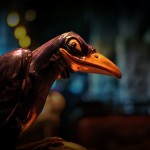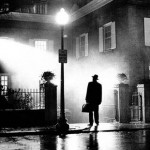On Friday, October 24, NBC premiered its new series Dracula, starring British actor Jonathan Rhys Meyers in the title role. The show earned surprisingly solid ratings for a late-Friday time slot, suggesting that, like its eponymous vampire, it may possess some longevity. Loosely based on Bram Stoker’s 1897 novel of the same name, Dracula follows the infamous Count to 1896 London, where he is posing as the nouveau riche American inventor Alexander Grayson and promising a new steampunk-style form of clean energy. This ruse is designed to help him hunt down members of a conspiracy as ancient as Dracula himself: the Order of the Dragon, a group possibly responsible for killing his wife centuries earlier, a wife who may have been reincarnated as the Victorian medical student Mina Murray (Jessica de Gouw).
Did you get all that? In its first hour of television, Dracula is thick with plots, and while the character names correspond to those in the book, the situations differ fairly radically. This is not necessarily a bad thing; I am a devoted fan of Stoker’s novel, but it has been filmed so many times by now that it might seem as though only an offering as downright zany as this could possibly feel fresh. Intrigue and action, conspiracies and mysteries, passion and love — surely a combination of these qualities should make for an original take on a classic horror tale.
Except that where it counts most, NBC’s Dracula is anything but original. In the latest issue of Christ and Pop Culture Magazine, I detail the ways in which the character of Count Dracula has been portrayed over the past century. And while Dracula may never be visible in a mirror, he almost always serves in some way as a reflection of the values held by the culture depicting him. From this perspective, Rhys Meyers’ Dracula differs relatively little from the other screen vampires of recent years. In the novel, women vampirized by Count Dracula (the three brides, Lucy Westenra) lose their sexual reserve; for Stoker the Victorian, this promiscuity is a negative quality, and he always juxtaposes this wanton sexuality against violent rejections of motherhood (eating babies, striking children). NBC’s Dracula seems poised to join other recent entries in the Dracula canon (most obviously Francis Ford Coppola’s 1992 film version) in depicting the Victorians as repressed and hypocritical. Moreover, as has tended to be the case with more recent screen adaptations, Dracula himself is something of a sexual object: the 36-year-old Rhys Meyers is something of a heartthrob in Britain, and NBC has definitely played up his seductive allure in its marketing.
Equally predictable is the degree of sympathy that Rhys Meyers’ Dracula elicits. Stoker’s vampire is monstrous, an anti-Christ figure who must be hunted by the imperfect but virtuous heroes and heroines. In the new television series, the major characters apart from Dracula are either flat and uninteresting or just as morally suspect as Dracula himself — with the exception of Mina, who, as I have noted, may actually be Dracula’s wife from another lifetime. Once again, these tropes (the subversive view of the protagonists, the reincarnated love through the ages) are pure Coppola — and Coppola himself was only synthesizing ideas that had already been used in even earlier Dracula films.
Indeed, if in the end there is anything original about this new vision of Dracula’s character, it is that series creators Cole Haddon and Daniel Knauf may be looking to push their show to the “logical” extreme: making Dracula the hero. While characters in Stoker’s novel occasionally wish that Dracula’s power could have been harnessed for good, only the most convoluted and counterintuitive reading of it could make him into anything but a cruel villain. Of late, however, Dracula’s status has changed to Byronic anti-hero, perhaps even tragic hero. But however morally subversive or untraditional these renderings have been, almost all have kept one dynamic in place: Dracula must be hunted and destroyed, even if it is by people and methods as ethically questionable as he himself is. But Haddon and Knauf give us a Dracula who is not only as handsome and emotionally complex as any leading man, but one who has been absolved of at least some of his worst crimes. This Dracula comes to London not to conquer it but to disrupt an unjust fossil-fuel monopoly, and his violence in the pilot is largely limited to members of this conspiracy. The series joins many recent Dracula films in identifying its Dracula with the historical figure of Vlad Țepeș (though Stoker himself likely knew very little about the real Vlad), but it apparently gets him off the hook by making the secret cabalistic Order of the Dragon the true perpetrators of the ancient war crimes attributed to him.
In short, NBC’s new Dracula may do what media Draculas of the past several decades have stopped just short of doing: encouraging the viewer to be cheering outright for Dracula in his exploits. If the series follows this trajectory, it would at least prove an interesting new departure, though I cannot say it would necessarily be a welcome one. Because in the end, at Dracula’s heart (whether he gets staked there or not), many of the qualities Stoker originally portrayed as reprehensible still remain present in subsequent incarnations of the Count. He is still a violent supernatural force that feeds on the blood of others. He still represents a threat to an ethic of sexual monogamy. He still endures through an immortality that is illicitly attained through compact with dark spiritual forces. Unless NBC’s Dracula addresses these concerns in the course of its run — and I am hardly confident that the writers desire such a thing — it will present yet one more version of Dracula that glories in the appeal of sin without fully acknowledging its dire, eternal consequences.












